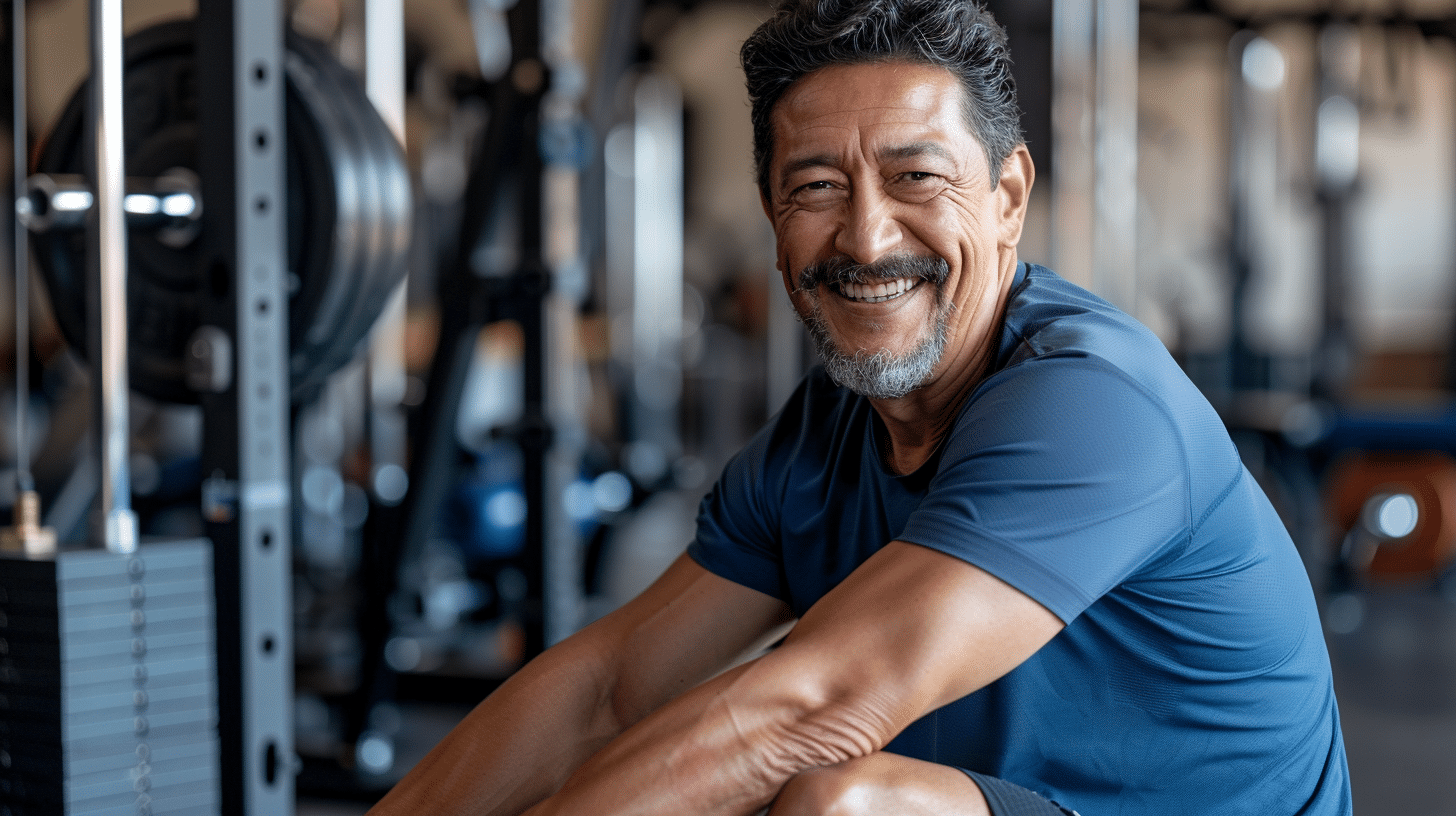
Body Composition
Understanding the Balance Between Muscle and Fat for Optimal Wellness
Body composition refers to the relative proportions of fat and lean mass, and understanding it is crucial for effective weight management. It includes not only losing weight but also maintaining a healthy body weight. Various methods used to measure body composition are:
- DEXA (dual-energy X-ray absorptiometry) is considered one of the most accurate methods. It uses X-ray technology to measure the amount of fat, muscle, and bone in different body regions. It provides accurate measurements of bone mineral density and is often used in research settings, but it can be expensive and involve radiation exposure.
- Hydrostatic weighing (also known as underwater weighing) involves weighing a person on land and in water to determine their body density, from which body fat percentage can be calculated. It is considered the gold standard for body fat measurement but requires specialized equipment and can be inconvenient.
- Air displacement plethysmography (like the Bod Pod) uses air displacement to measure body volume and calculates body composition based on this data. It is a less invasive method that provides accurate measurements but requires specialized equipment.
Each method has its advantages and limitations in assessing body composition. Understanding body composition through these methods can help individuals tailor their weight loss management strategies more effectively, allowing them to set realistic goals and make informed decisions about exercise and nutrition.

Importance Of Muscle Mass
Understanding the significance of muscle mass is crucial for effective weight management. While many fixate on the number on the scale, this can be deceptive as muscle weighs more than fat. Monitoring your muscle mass provides a more precise view of your body composition, empowering you to make informed decisions about your weight management journey.
Beyond aesthetics, muscle mass plays a vital role in overall health and well-being. It enhances mobility by supporting and stabilizing joints, contributes to good posture by aligning the spine and skeletal structures, and bolsters the immune system by producing proteins that combat infections and diseases.
Understanding your body’s muscle and fat composition is key to successful weight management. Monitoring muscle mass prevents muscle loss, maintains metabolism, and aids long-term weight maintenance. Knowing your muscle-to-fat ratio guides tailored fitness and nutrition plans, promoting a sustainable approach to weight management that enhances mobility, posture, and immunity.

Body Fat Percentage Analysis
Body fat percentage analysis is crucial to understanding body composition and its relation to weight management. This analysis involves determining and interpreting the amount of body fat present in an individual’s overall weight. It is typically measured using various methods such as skinfold calipers, bioelectrical impedance, or dual-energy x-ray absorptiometry. Interpreting body fat percentage helps to categorize individuals into different classifications, ranging from essential fat, which is necessary for normal bodily functions, to excess fat, which can have negative implications for health and fitness.
Understanding these different categories and their implications is essential for individuals who maintain a healthy weight and improve their overall well-being. By analyzing body fat percentage, one can make informed decisions about their weight management journey, such as adopting appropriate dietary changes, incorporating regular exercise, and monitoring progress over time. This analysis provides invaluable insights into an individual’s body composition and is a foundation for optimizing weight management strategies.

Methods for Assessing Body Composition
When it comes to weight management, understanding body composition is crucial. Body composition refers to muscle, bone, and fat proportion. It is not just about the number on the scale but also how the weight is distributed within the body. Two standard methods for assessing body composition are:
- The skinfold test involves using calipers to measure the thickness of skinfolds at different sites on the body. These measurements are then used to estimate the amount of subcutaneous fat present. The sum of the skinfold measurements is used to calculate body density, which is then used to estimate body fat percentage. This method provides a relatively quick and non-invasive way to assess body composition.
- The underwater weighing involves submerging a person in the water to measure their body volume. By comparing the person’s weight in the air to their weight underwater, their body density can be calculated. Body density is inversely related to body fat percentage, meaning that the lower the body density, the higher the body fat percentage.
These methods for assessing body composition are invaluable tools in managing weight. Accurately measuring body fat percentage allows individuals to set realistic goals and track their progress over time. This information allows tailored weight management plans to increase muscle mass and reduce body fat. Understanding body composition helps individuals achieve their desired weight and promotes overall health and well-being.
Understanding Your Body Composition for Optimal Health
Understanding your body composition, including the balance between muscle and fat, is essential for effective weight management. It’s not just about the numbers on the scale but about how your body is made up. By focusing on muscle mass and overall body composition, you can adopt a healthier, more sustainable approach to managing your weight. If you’re ready to take control of your health and embark on a personalized weight loss journey, contact Medical Health Solutions today to schedule a consultation at (303) 951-8617.
We provide weight loss services for these Lone Tree, Colorado areas:
Lone Tree, Acres Green, Belvedere, Bluffmont Estates, Carriage Club, Centennial Ridge, Club Terrace, Country Club Estates, Cypress Green, Douglas County, Fairways At Lone Tree, Heritage Estates, Heritage Hills, Lincoln Square Lofts, Masters Park, Montecito, Prominence Point, Ridgegate, Taos of Lone Tree, Terra Ridge, The Fairways, and Wildcat Ridge.
We also provide weight loss services for Edgewater, Colorado and these surrounding areas:
Edgewater, Wheat Ridge, Arvada, Westminster, Granite, Golden, Englewood, Littleton, Broomfield, Dupont, Commerce City, Morrison, and Henderson.
We also provide weight loss services for these Denver, Colorado areas:
Denver, Baker, Capitol Hill, Central Business District, Cheesman Park, Cherry Creek, City Park, City Park West, Civic Center, Congress Park, Country Club, Lincoln Park, North Capitol Hill, Speer, Union Station, Belcaro, Cory-Merrill, East Colfax, Hale, Hilltop, Indian Creek, Lowry, Montclair, Park Hill, Virginia Village, Washington Virginia Vale, Windsor, Clayton, Cole, Elyria-Swansea, Five Points, Globeville, North Park Hill, Skyland, South Park Hill, Whittier, Central Park, Gateway, Green Valley Ranch, Montbello, Northeast Park Hill, Auraria, Berkeley, Chaffee Park, Highland, Jefferson Park, Regis, Sloan Lake, Sunnyside, West Highland, College View, South Platte, Overland, Platt Park, Rosedale, University, University Hills, University Park, Washington Park, Washington Park West, Wellshire, Goldsmith, Hampden, Hampden South, Kennedy, Southmoor Park, Southwest, Bear Valley, Fort Logan, Harvey Park, Harvey Park South, Marston, West, Public housing in Sun Valley., Athmar Park, Barnum, Barnum West, Mar Lee, Ruby Hill, Sun Valley, Valverde, Villa Park, West Colfax, and Westwood.






